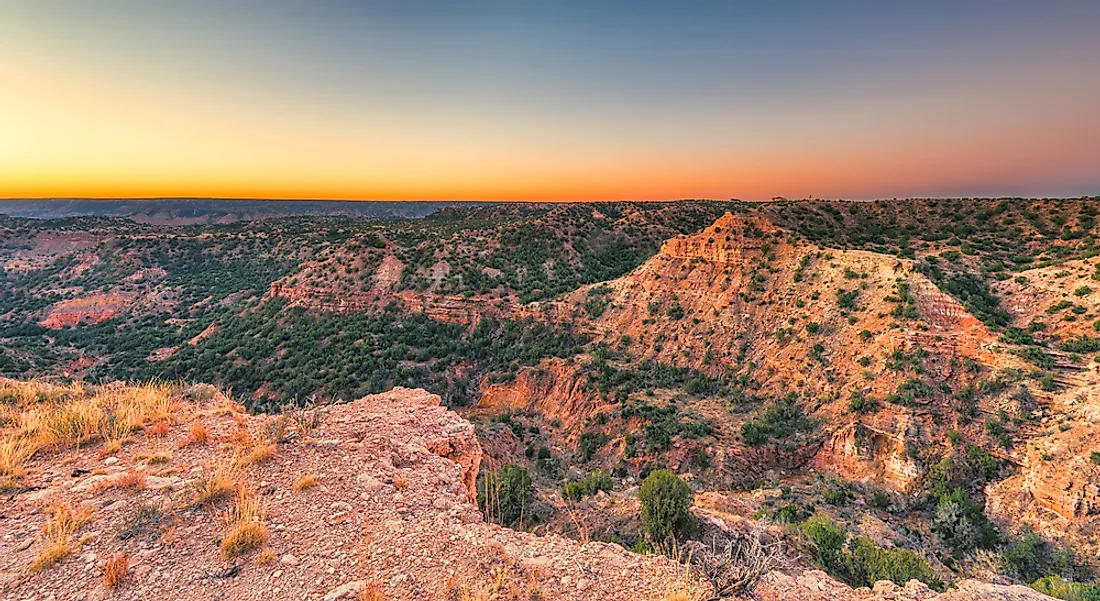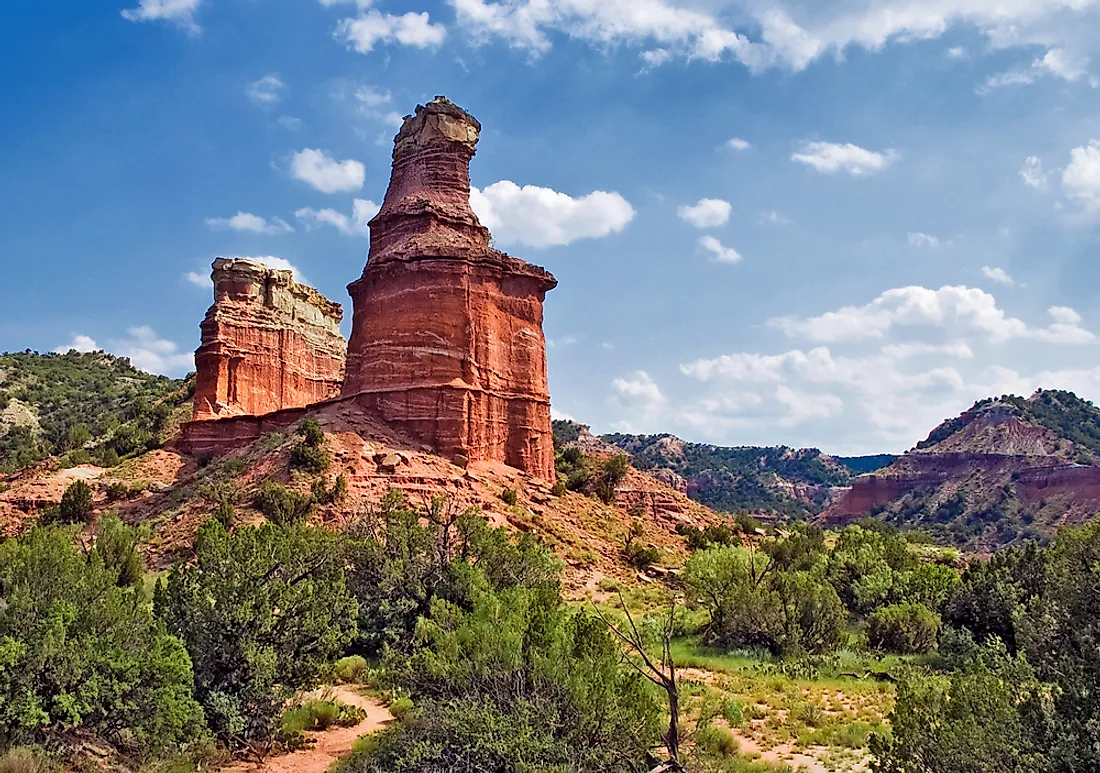Palo Duro Canyon - Unique Places around the World

Palo Duro Canyon is found in Texas, close to the city of Amarillo. It is part of the Caprock escarpment that is a significant physical feature in the area; the canyon holds the record as the second largest canyon in the United States measuring an approximate length of 120 miles with an average width of around 6 miles. It dips down to about 820 feet with some places being as deep as 1,000 feet. Early explorers from Spain probably discovered the Canyon and gave it the name Palo Duro, which means hardwood in Spanish.
4. Tourism
Palo Duro Canyon is more than just a scenic stretch of physical beauty; it is a treasure cove of history, and many people visit the place to relive some of that history. Having been home to Native Americans as far back as 15,000 years ago, the Palo Duro has been a favorite site for archaeologists and history lovers who believe the place holds many secrets from the past. The deep canyon also provides adventure seekers from around the world with exhilarating experiences like bungee jumping, all thanks to its extreme depths. Since the canyon was turned into a public park by the state in 1934, it has been attracting both local and foreign tourists.
3. Structure

The canyon is a feature that resulted from water and wind erosion, and it is characterized by caves and hoodoos. It has stratified layers of rock that got exposed by the erosion, as well as rich sediments on the floor of the canyon that are periodically deposited and washed away by heavy rains. Standalone rock outcrops that have withstood the forces of erosions are also a common feature with the most famous of them all being the Lighthouse Rock.
2. History
Evidence of the first human settlement in and around the canyon dates back to 15,000 years ago, where Native Americans made the area their home after being attracted by the clean waters of the Red River; the same river whose erosional activities are behind the formation of the canyon in the first place. The communities that inhabited the area include the Folsom and the Clovis who were hunting for the giant bison and herds of the mammoth. Other communities that occupied the area more recently include the Kiowa, Comanche, and Apache. They left their marks of rock of art and other bedrock mortars that they utilized to ground roots, beans, and mesquite for food. The first time Europeans laid eyes on the canyon was in 1541 when some members of the Colorado Expedition visited the area. In 1852, the region was mapped for the first time by an American military team that was spearheaded by Captain Randolph Macy. The Native Americans were forcefully removed in 1874 in a bloody war that left many dead, and the survivors were sent to a reservation in Oklahoma. The state of Texas bought a section of the canyon in 1934 and turned it into a park that is open to the public to the present day.
1. Threats
Although the Palo Duro Canyon is not facing a significant threat, there are some animals in the area which have been listed as threatened. The Palo Duro Mouse is a nocturnal mouse that inhabits the steep walls of Palo Duro Canyon and the juniper woodlands of the canyon. The management of the park has placed a total ban on any form of ash producing fires such as charcoal and wood. Visitors are only allowed to carry containerized fuel stoves that use an on-or-off switch or having a shut-off valve.











